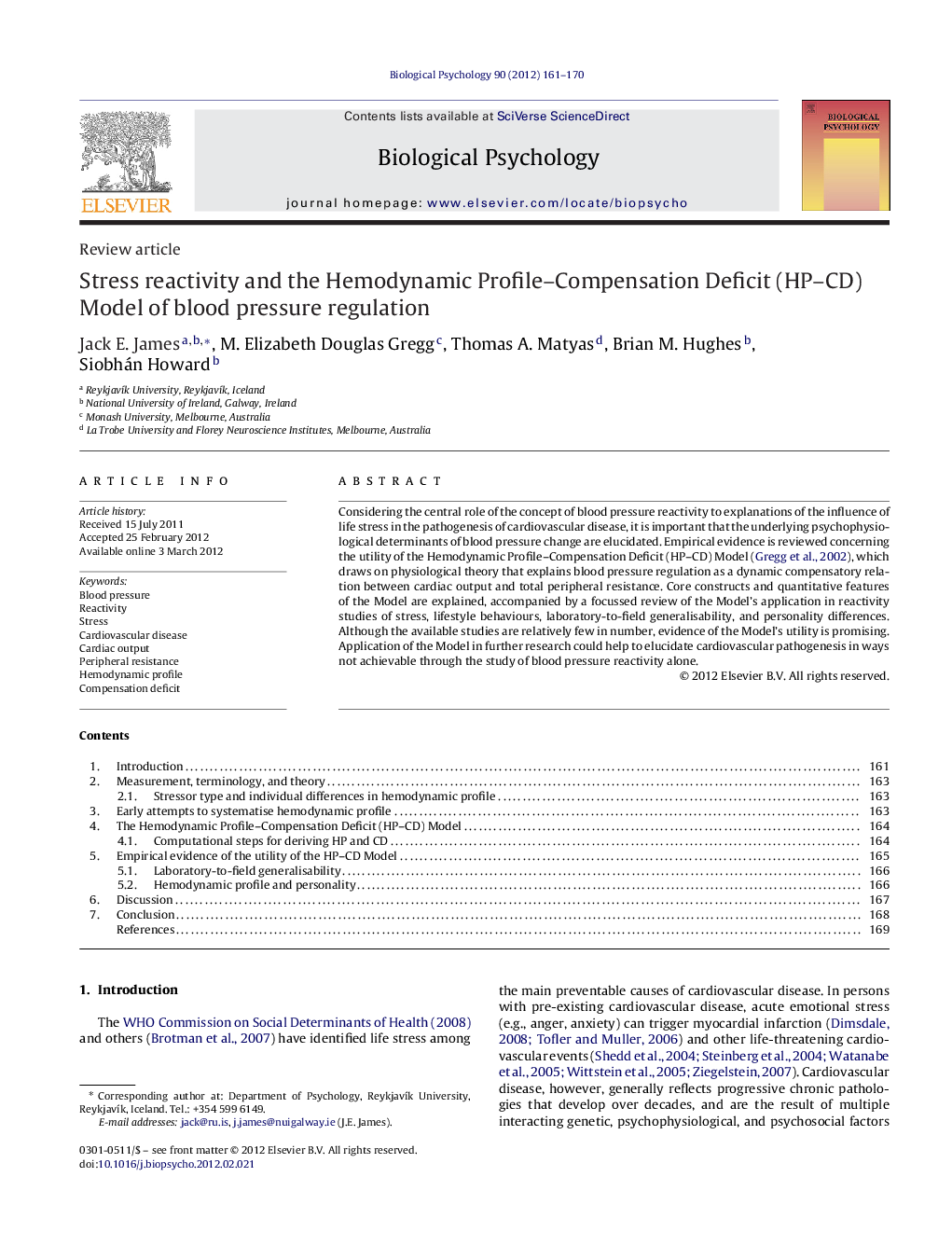| Article ID | Journal | Published Year | Pages | File Type |
|---|---|---|---|---|
| 921112 | Biological Psychology | 2012 | 10 Pages |
Considering the central role of the concept of blood pressure reactivity to explanations of the influence of life stress in the pathogenesis of cardiovascular disease, it is important that the underlying psychophysiological determinants of blood pressure change are elucidated. Empirical evidence is reviewed concerning the utility of the Hemodynamic Profile–Compensation Deficit (HP–CD) Model (Gregg et al., 2002), which draws on physiological theory that explains blood pressure regulation as a dynamic compensatory relation between cardiac output and total peripheral resistance. Core constructs and quantitative features of the Model are explained, accompanied by a focussed review of the Model's application in reactivity studies of stress, lifestyle behaviours, laboratory-to-field generalisability, and personality differences. Although the available studies are relatively few in number, evidence of the Model's utility is promising. Application of the Model in further research could help to elucidate cardiovascular pathogenesis in ways not achievable through the study of blood pressure reactivity alone.
► Blood pressure reactivity and the role of life stress in cardiovascular disease. ► BP regulation involves a dynamic compensatory relation between cardiac output and total peripheral resistance. ► We examine the utility of the Hemodynamic Profile–Compensation Deficit Model. ► The model's core constructs and quantitative features are explained. ► We conclude that the model's utility has been well supported.
